Abstract
The use of a self-recording and supervision program to increase interactions between direct care staff and profoundly retarded persons in a state residential facility was investigated. Following baseline, staff were provided with instructions regarding what to self-record, criteria for how many interactions to record, and a prepared card on which to make the recordings. Throughout the study, the staff supervisor monitored intermittently staff-client interactions. Observations indicated that when the staff recorded their interactions with clients in a loosely structured dayroom setting, the rate of interactions increased noticeably for each staff person. Behavioral ecology measures indicated that other staff responsibilities, such as maintaining the cleanliness of residents and the physical area, were not affected detrimentally when social interactions increased and actually showed small improvements. Additionally, small decreases in resident self-stimulatory and disruptive/aggressive behaviors occurred when the rate of social interactions from staff persons increased. Follow-up measures indicated that the rate of staff self-recording was variable, but when staff did self-record, the increased rate of staff-client interactions maintained.
Full text
PDF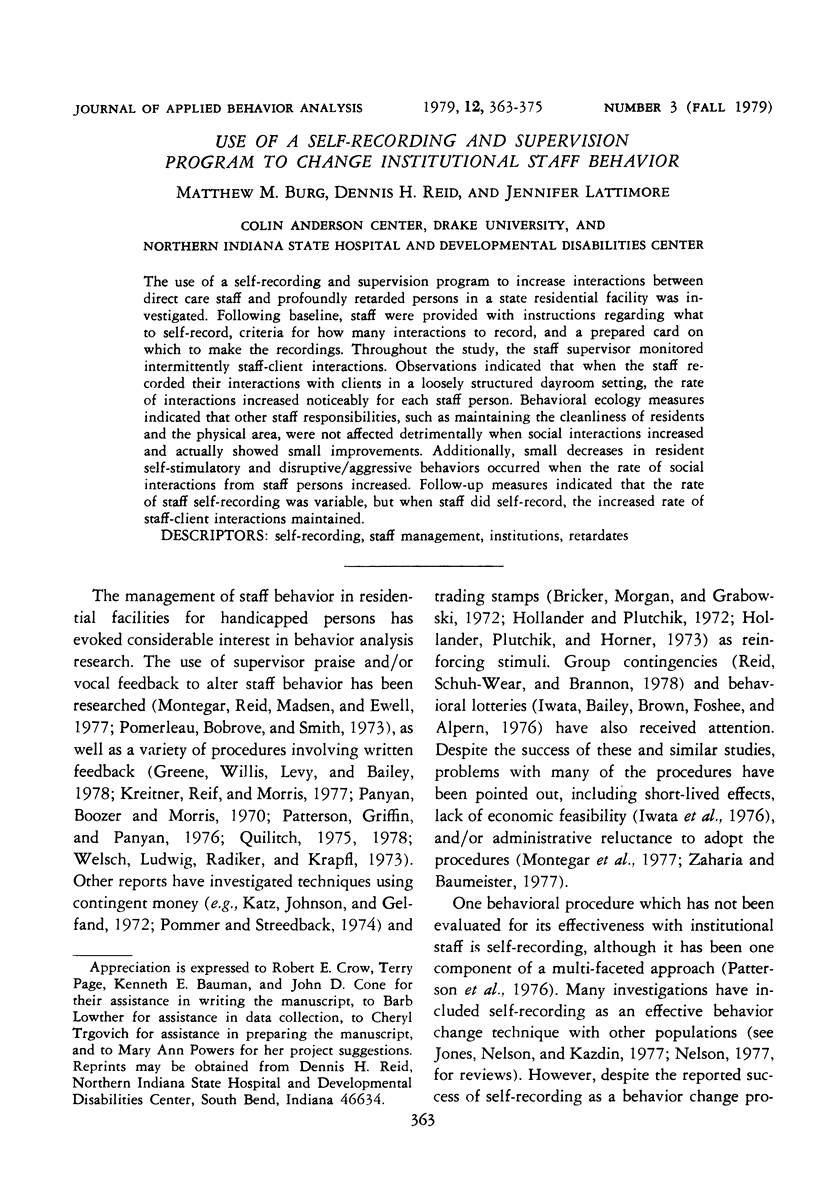
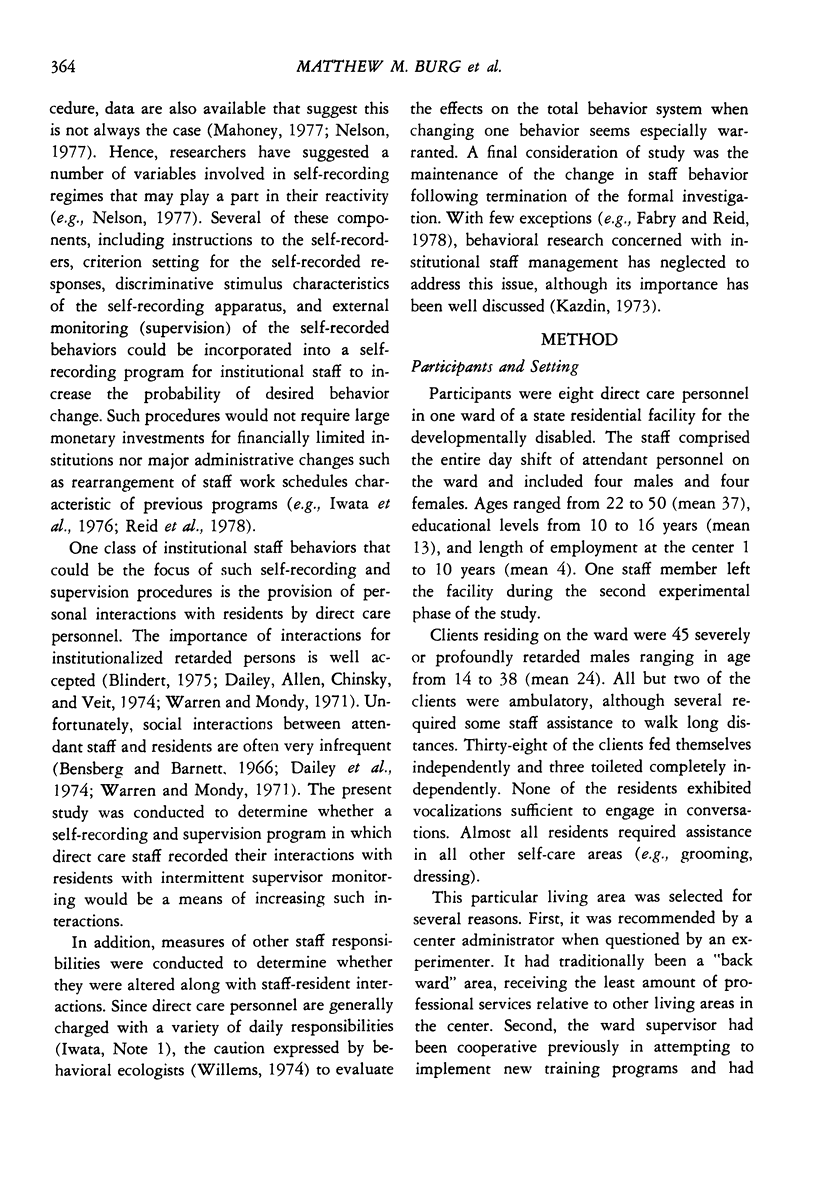
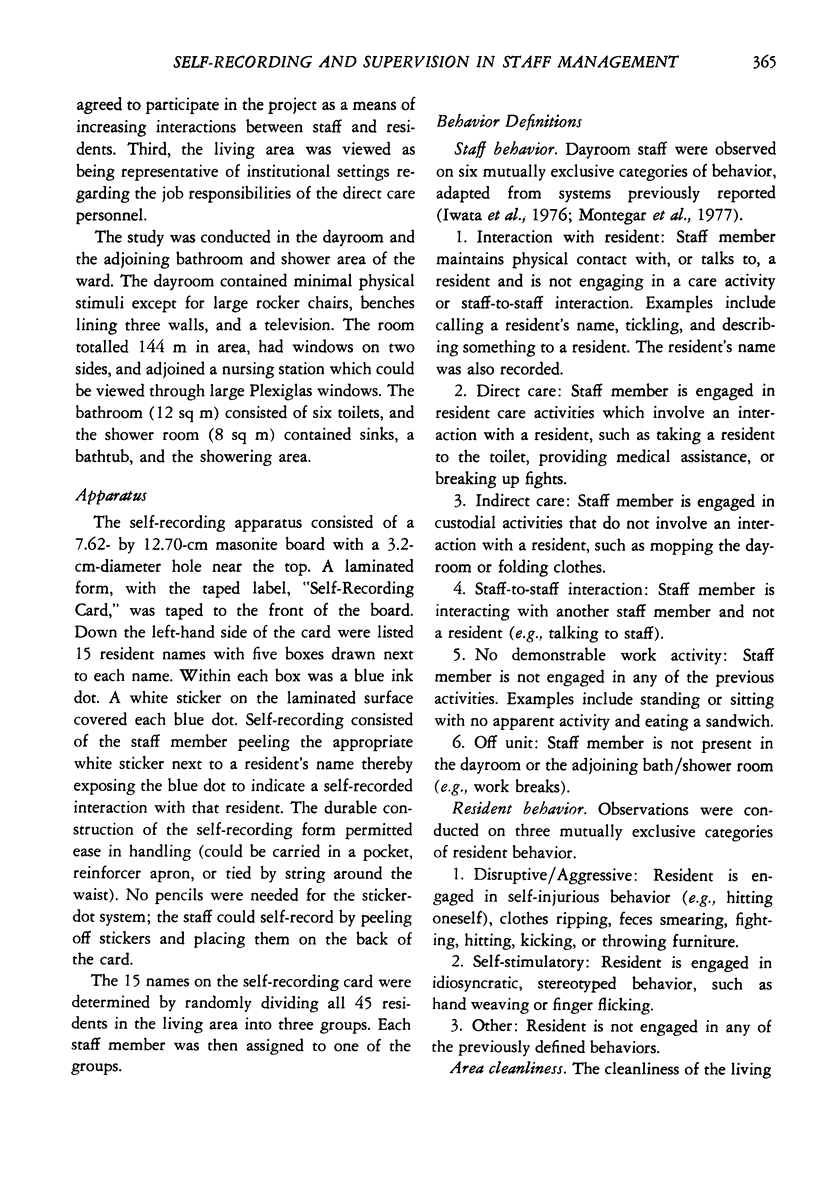
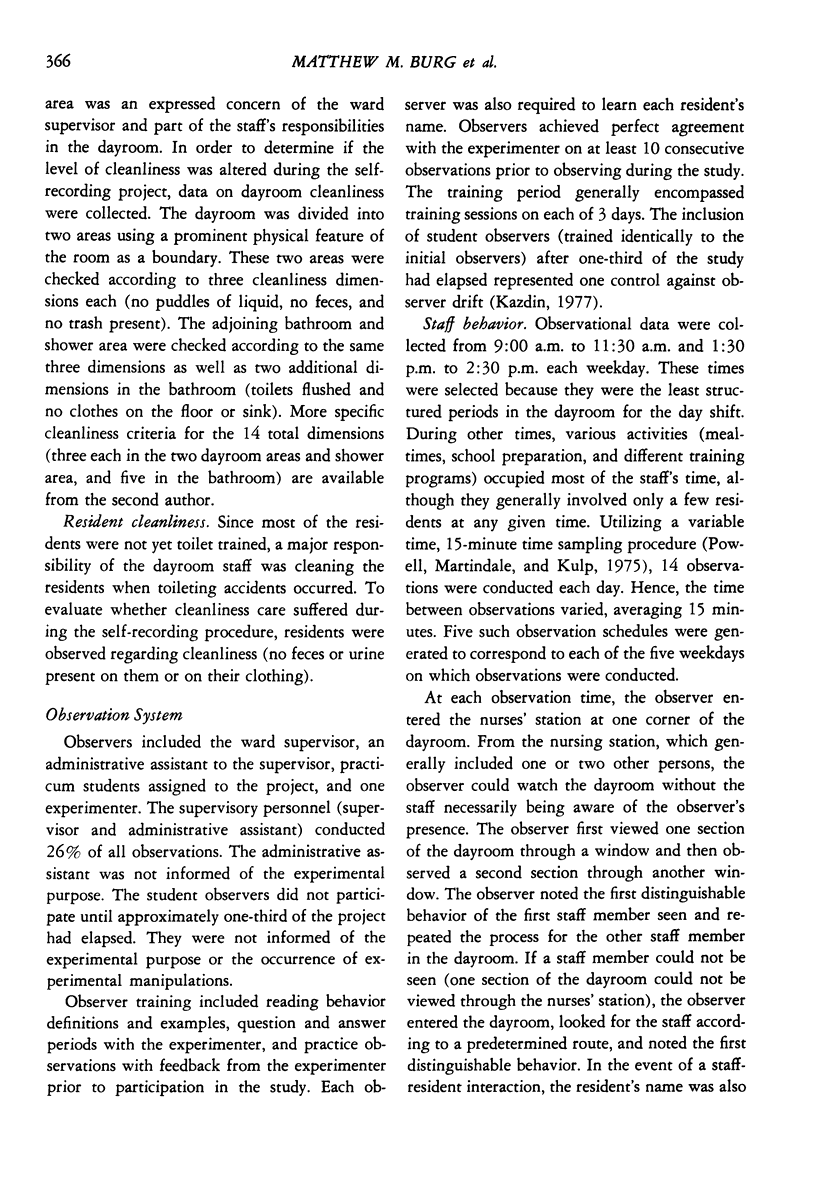
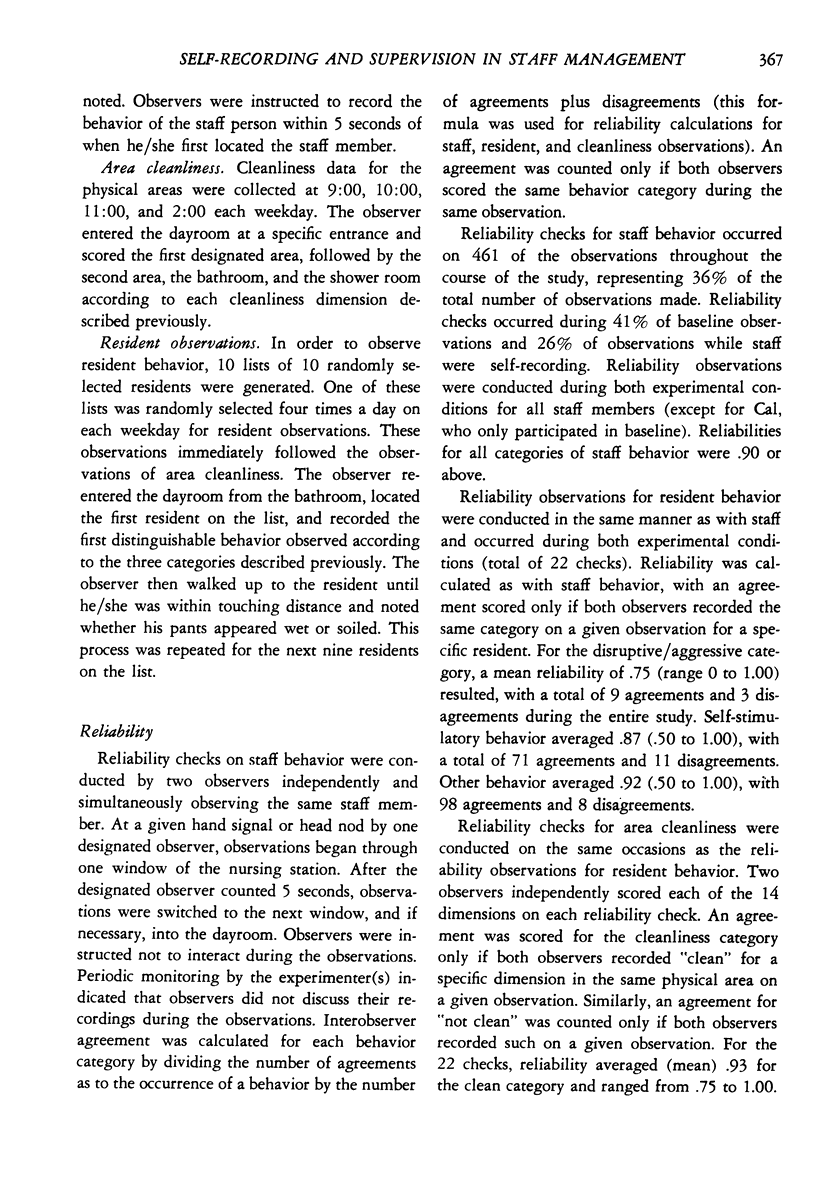
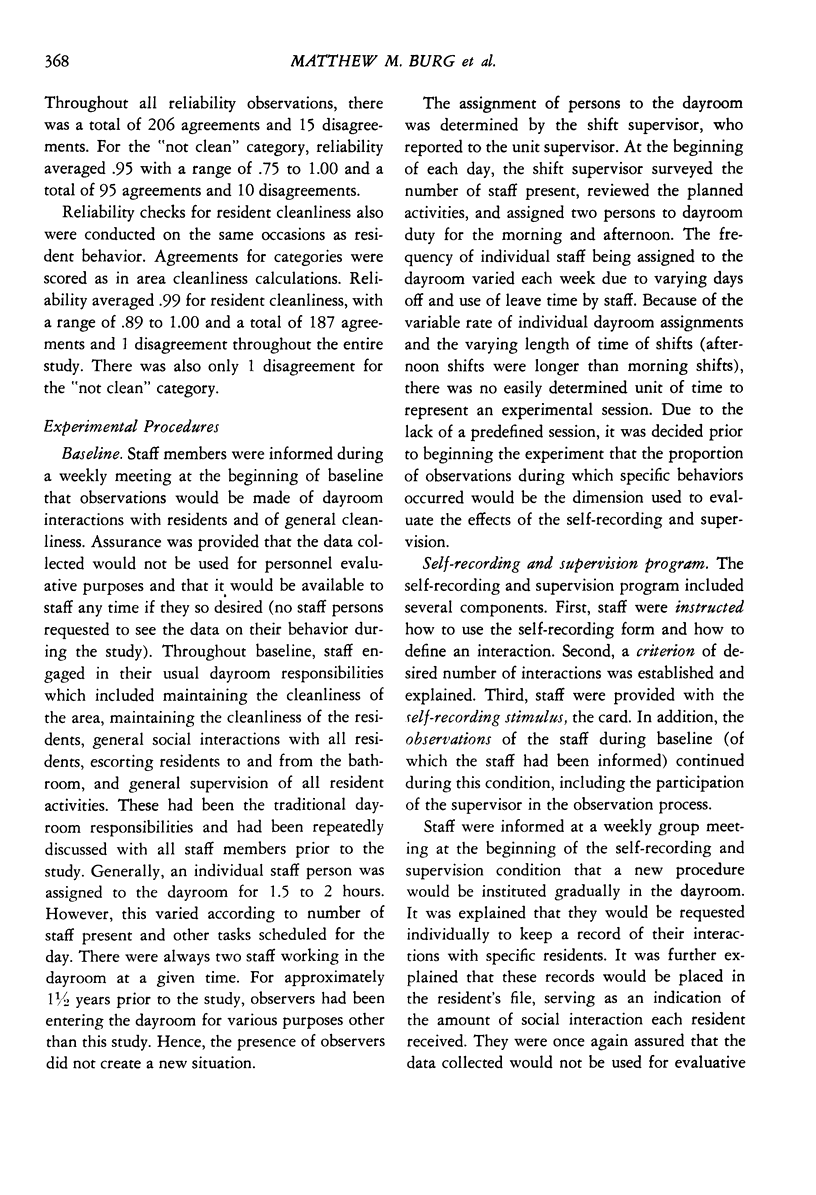
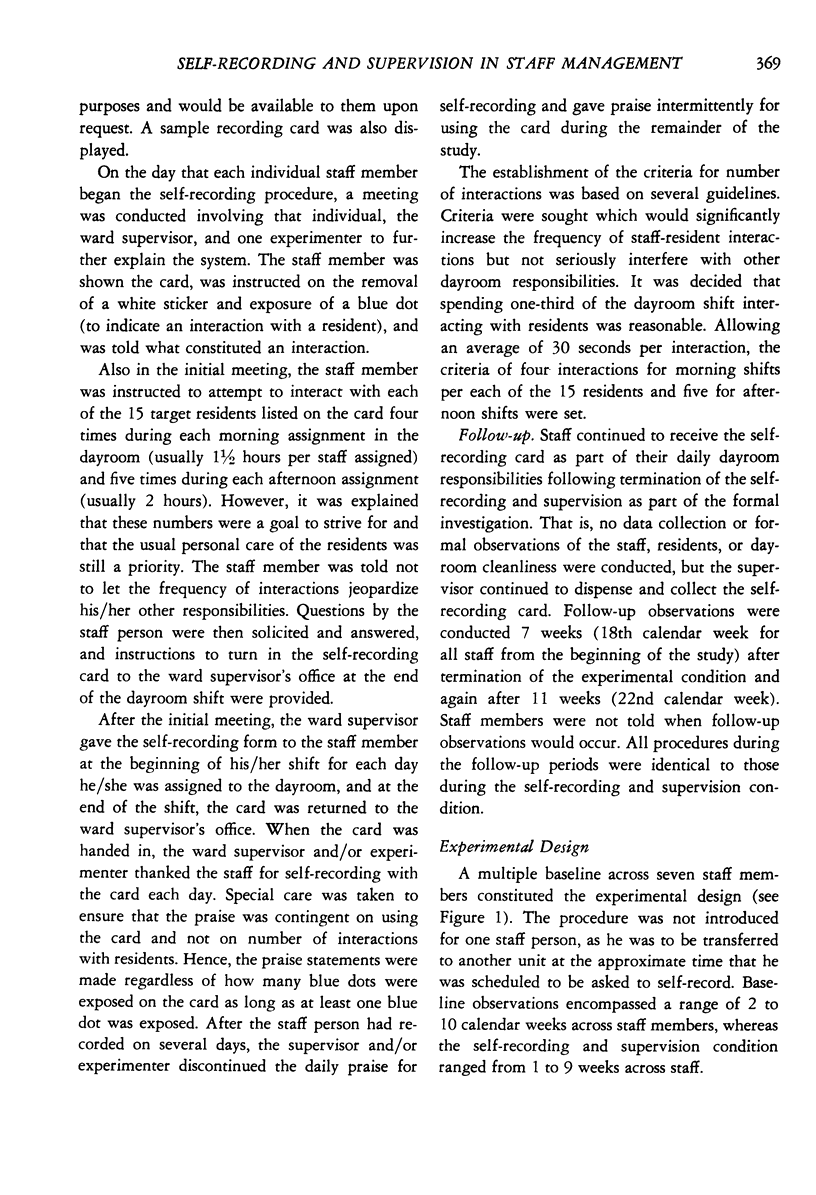
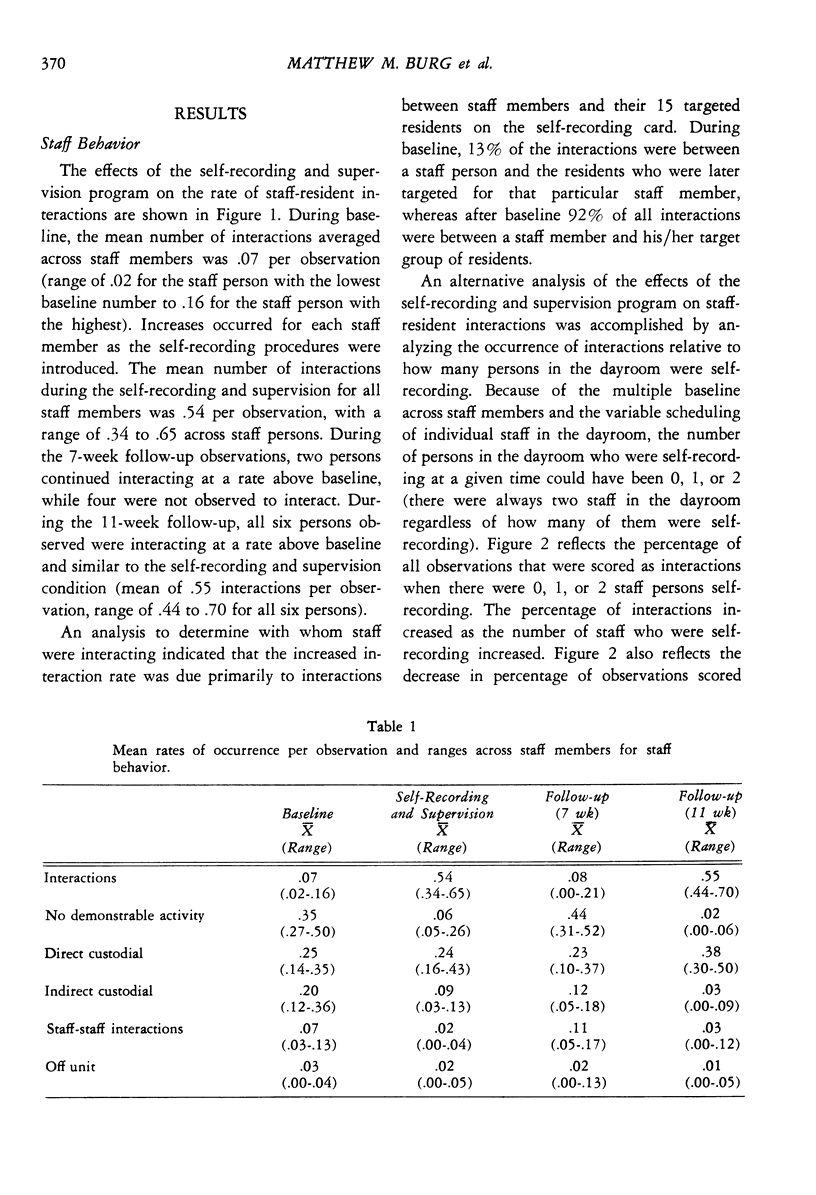
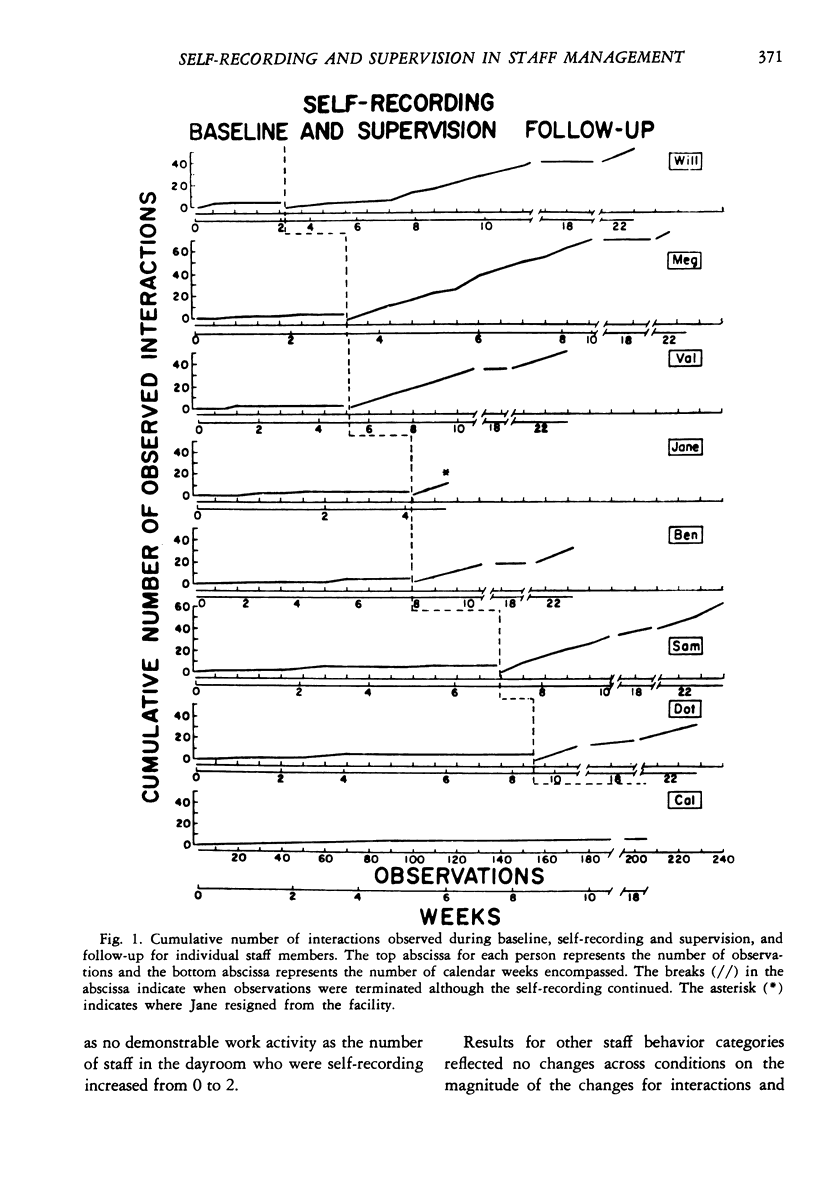
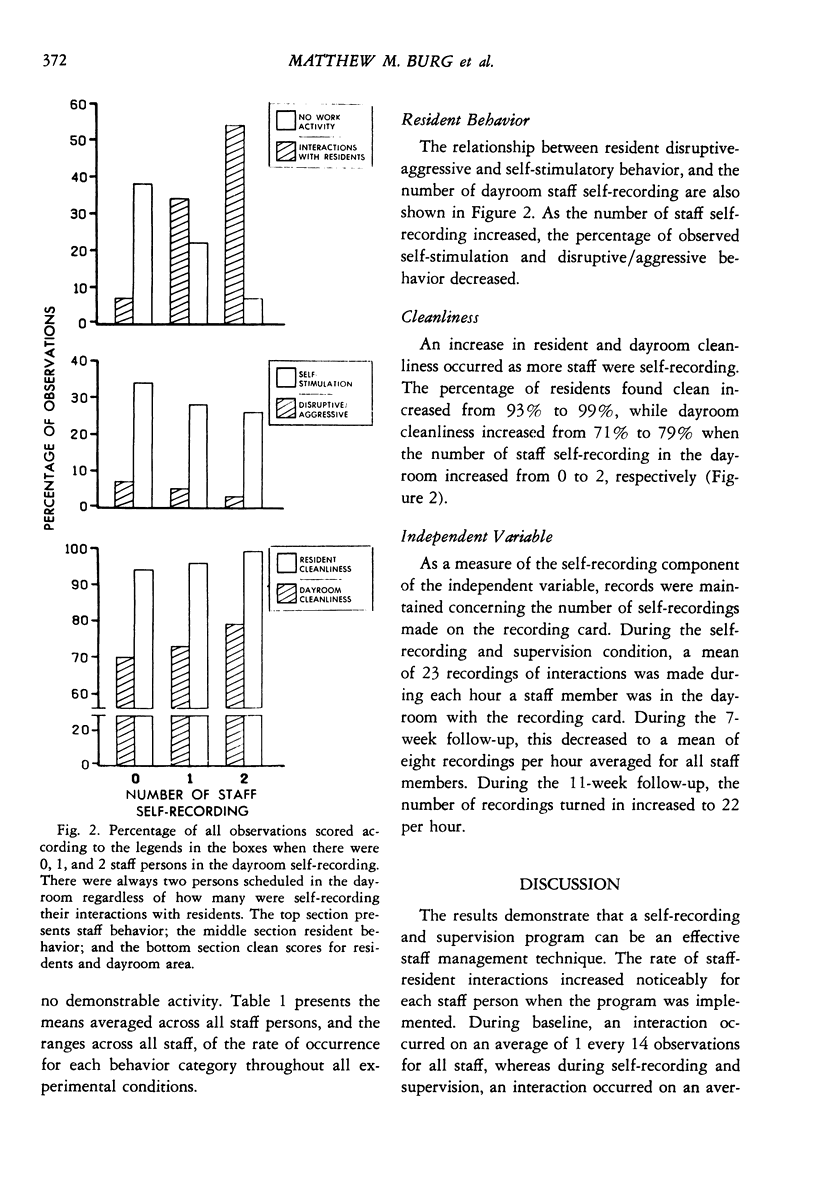
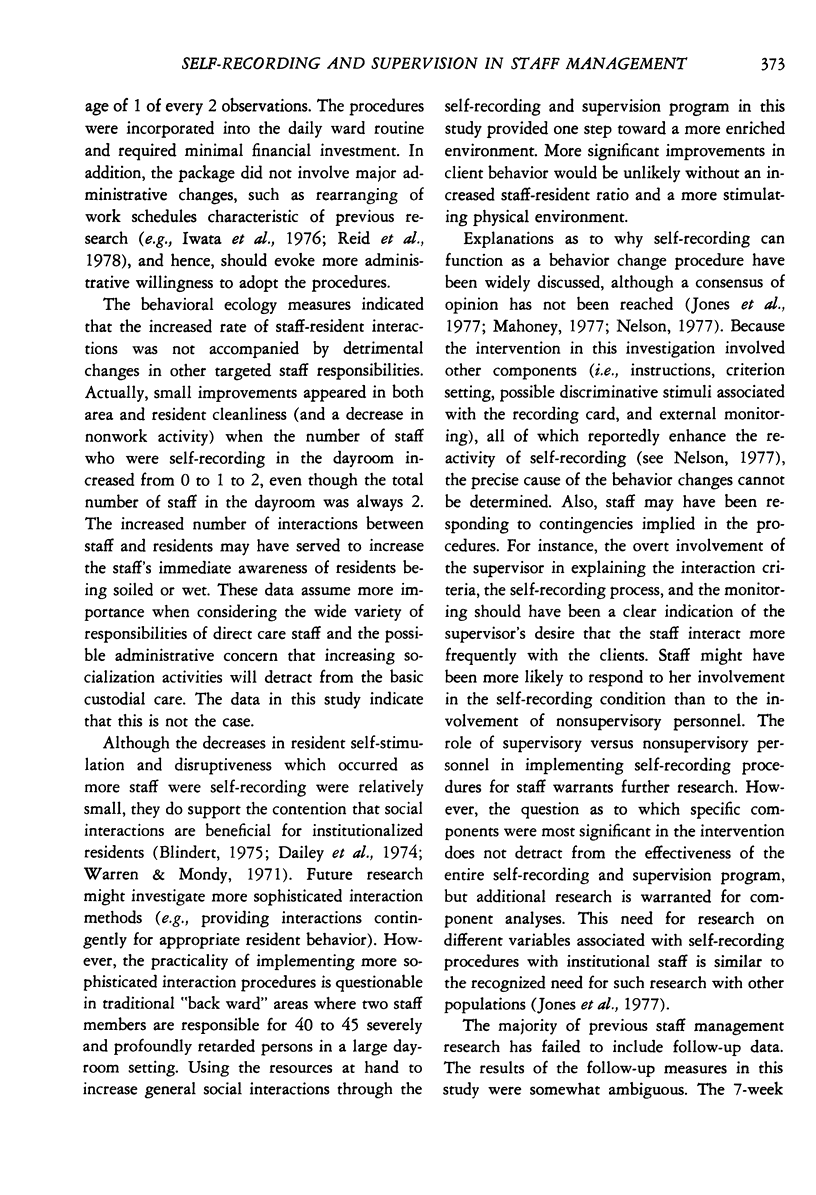
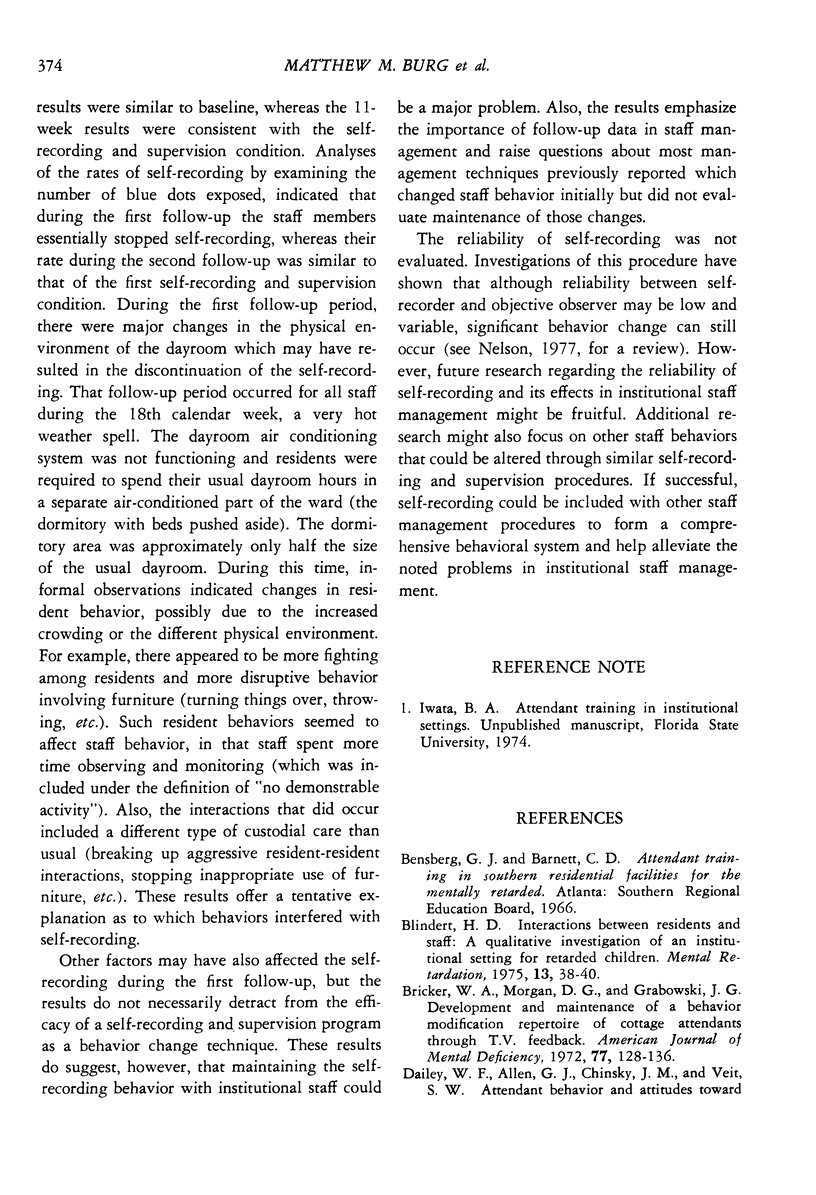
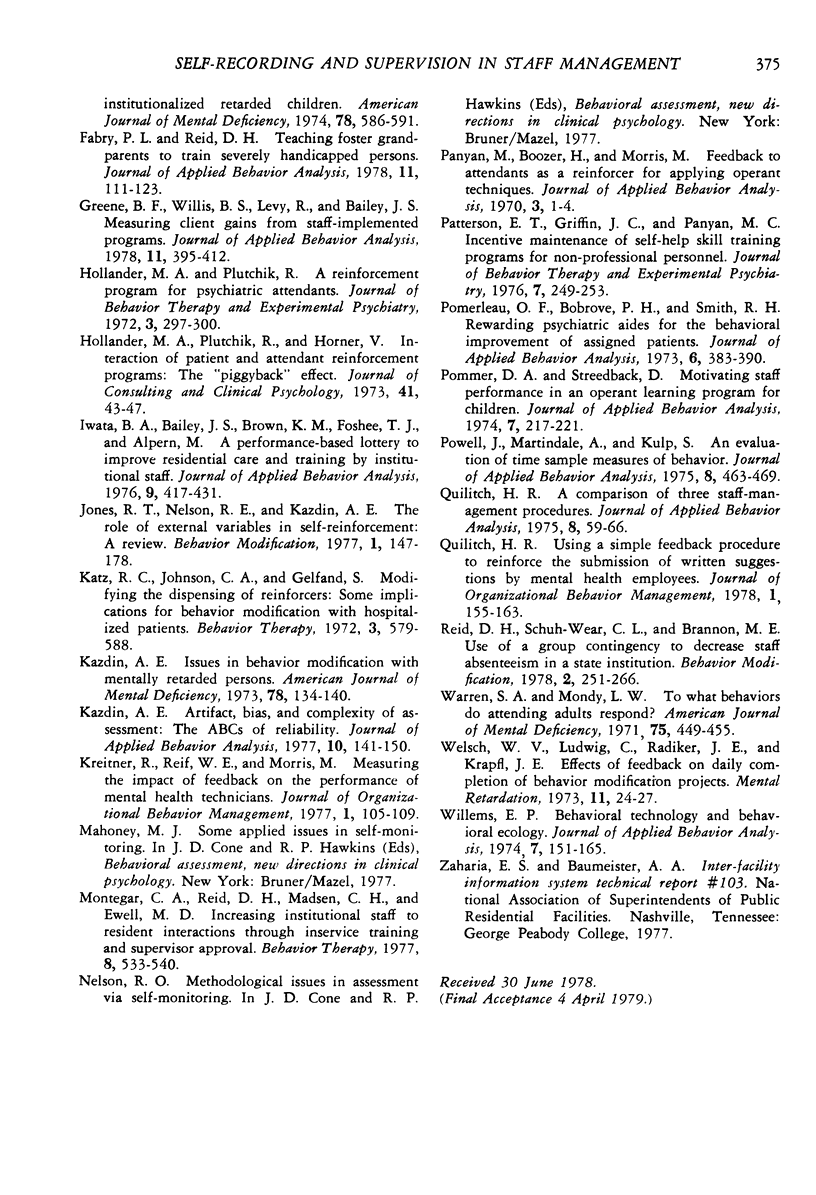
Selected References
These references are in PubMed. This may not be the complete list of references from this article.
- Bricker W. A., Morgan D. G., Grabowski J. G. Development and maintenance of a behavior modification repertoire of cottage attendants through T.V. feedback. Am J Ment Defic. 1972 Sep;77(2):128–136. [PubMed] [Google Scholar]
- Dailey W. F., Allen G. J., Chinsky J. M., Veit S. W. Attendant behavior and attitudes toward institutionalized retarded children. Am J Ment Defic. 1974 Mar;78(5):586–591. [PubMed] [Google Scholar]
- Fabry P. L., Reid D. H. Teaching foster grandparents to train severely handicapped persons. J Appl Behav Anal. 1978 Spring;11(1):111–123. doi: 10.1901/jaba.1978.11-111. [DOI] [PMC free article] [PubMed] [Google Scholar]
- Greene B. F., Willis B. S., Levy R., Bailey J. S. Measuring client gains from staff-implemented programs. J Appl Behav Anal. 1978 Fall;11(3):395–412. doi: 10.1901/jaba.1978.11-395. [DOI] [PMC free article] [PubMed] [Google Scholar]
- Hollander M., Plutchik R., Horner V. Interaction of patient and attendant reinforcement programs: the "piggyback" effect. J Consult Clin Psychol. 1973 Aug;41(1):43–47. doi: 10.1037/h0035627. [DOI] [PubMed] [Google Scholar]
- Iwata B. A., Bailey J. S., Brown K. M., Foshee T. J., Alpern M. A performance-based lottery to improve residential care and training by institutional staff. J Appl Behav Anal. 1976 WINTER;9(4):417–431. doi: 10.1901/jaba.1976.9-417. [DOI] [PMC free article] [PubMed] [Google Scholar]
- Kazdin A. E. Artifact, bias, and complexity of assessment: the ABCs of reliability. J Appl Behav Anal. 1977 Spring;10(1):141–150. doi: 10.1901/jaba.1977.10-141. [DOI] [PMC free article] [PubMed] [Google Scholar]
- Kazdin A. E. Issues in behavior modification with mentally retarded persons. Am J Ment Defic. 1973 Sep;78(2):134–140. [PubMed] [Google Scholar]
- Panyan M., Boozer H., Morris N. Feedback to attendants as a reinforcer for applying operant techniques. J Appl Behav Anal. 1970 Spring;3(1):1–4. doi: 10.1901/jaba.1970.3-1. [DOI] [PMC free article] [PubMed] [Google Scholar]
- Pomerleau O. F., Bobrove P. H., Smith R. H. Rewarding psychiatric aides for the behavioral improvement of assigned patients. J Appl Behav Anal. 1973 Fall;6(3):383–390. doi: 10.1901/jaba.1973.6-383. [DOI] [PMC free article] [PubMed] [Google Scholar]
- Pommer D. A., Streedbeck D. Motivating staff performance in an operant learning program for children. J Appl Behav Anal. 1974 Summer;7(2):217–221. doi: 10.1901/jaba.1974.7-217. [DOI] [PMC free article] [PubMed] [Google Scholar]
- Powell J., Martindale A., Kulp S. An evaluation of time-sample measures of behavior. J Appl Behav Anal. 1975 Winter;8(4):463–469. doi: 10.1901/jaba.1975.8-463. [DOI] [PMC free article] [PubMed] [Google Scholar]
- Quilitch H. R. A comparison of three staff-management procedures. J Appl Behav Anal. 1975 Spring;8(1):59–66. doi: 10.1901/jaba.1975.8-59. [DOI] [PMC free article] [PubMed] [Google Scholar]
- Warren S. A., Mondy L. W. To what behaviors do attending adults respond? Am J Ment Defic. 1971 Jan;75(4):449–455. [PubMed] [Google Scholar]
- Welsch W. V., Ludwig C., Radiker J. E., Krapfl J. E. Effects of feedback on daily completion of behavior modification projects. Ment Retard. 1973 Aug;11(4):24–26. [PubMed] [Google Scholar]
- Willems E. P. Behavioral technology and behavioral ecology. J Appl Behav Anal. 1974 Spring;7(1):151–165. doi: 10.1901/jaba.1974.7-151. [DOI] [PMC free article] [PubMed] [Google Scholar]


